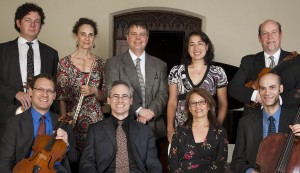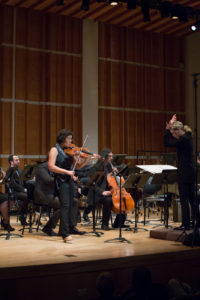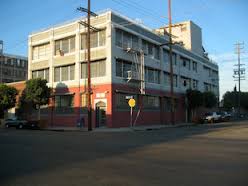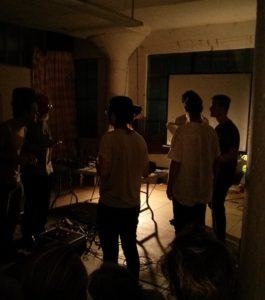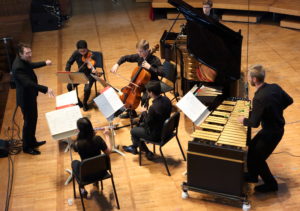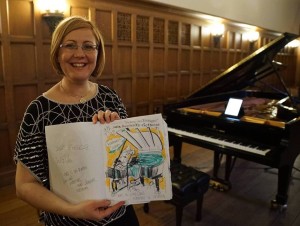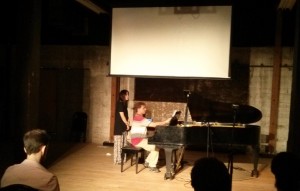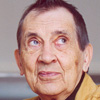Every year the BBC in conjunction with the Proms holds a competition for composers aged 12 through 18 as part of their larger music education program Inspire. Each concert performance of the winning pieces has always had a slightly different format, but has tended over the years towards less talk and more music. It has gradually come to include only the winning works and not those which were “highly commended.” The concerts in many past years have been at the Royal College of Music, but the 2016 concert, on August 15, was in the theater at Broadcasting House. Since it only included the six winning compositions, it was quite short, in fact less than an hour long. All of the performances, by members of the Aurora Orchestra, whose conductor is Nicolas Collon, were thoroughly prepared, sympathetically presented, and elegantly and enthusiastically executed. Of the pieces, Morgan Overton’s Two Boys, a setting of a Walt Whitman poem for two baritones, two horns, and two violas, made the strongest impression on this listener. The baritones, always singing together in a style evoking medieval vocal music, or maybe earlier vocal music as filtered through late Stravinsky, were complemented (rather than accompanied) by continuous dialog and commentary by the two instrumental units (pairs of horns and violas), each of which played its own distinctive strand of music. Both Shoshanah Siever‘s Les nuances de la lumière, for solo violin, and James Chan’s Litany, for a small string group, were impressively well written for the instruments but left the impression of not completely finishing the span of the argument of the piece. Jack Robinson’s Hound Hunter, written when he was ten (he is now twelve), for flute, bassoon, and ‘cello, realized a scenario involving the exploits of a group of wolves with a brisk vividness and no time (or notes) wasted. Sam Rudd-Jones’s Angry, for a fourteen piece chamber orchestra, realized its title in a work demonstrating considerable command of instrumental writing and formal control. Alex Jones’s Sensim mutationem for two pianos explored extremes of texture and means of gradually moving from one to the other. All of the works were impressive both in the clarity of their conceptions and in the strength of the realization of them.
On August 9, the concert presented by the BBC Philharmonic and their chief conductor Juanjo Mena began with a work by Mark Simpson, a winner of earlier BBC young composer competitions as well as BBC Radio 3 New Generation Artist. Israfel, written in 2014, is a depiction of the Islamic angel of the trumpet, particularly as described by Edgar Allan Poe: “…whose heart-strings are a lute, and how has the sweetest voice of all of God’s creatures…”The most immediate, most strongly remembered, for me anyway, aspect of Israel, which last about twelve minutes, is the expertness and clarity of its orchestral sound. The piece is clear and convincing in the arc of its development, and possibly a little prolix in its thematic ideas.
Donald Martino told me once that he had written an article refuting Boulez’s article on the death of Schoenberg. Although the details of that are at this point hazy to me, I clearly remember what he said the title of the article was: Fancy French Composing. That title has come to be for me a term descriptive of a certain kind of music, and most of the music of Henri Dutilleux which I’ve encountered falls into that category. “Tout un monde lointain…” for ‘cello and orchestra, for which ‘cellist Johannes Moser joined Mena and the BBC Philharmonic, certainly does. There’s no denying the skill of the orchestral writing, the sensitivity to the sound of everything, the subtlety and delicacy of the conception, and the superiority and soigné quality of it in every aspect, and all of it in the same ways all the time. But it all still leaves me unmoved, a little irritated, and a little bored. I am perfectly willing to admit this is more a failure of mine than of the music. (Big of me, I know.)
Before the performance of the Elgar first Symphony which ended the concert, the orchestra added a performance of Sir Charles his Pavan by Peter Maxwell Davies as a tribute to the composer who died in March and who had been Composer/Conductor of the orchestra for ten years. The piece was really a sort of double commemoration; Davies grew up in Salford, a metropolitan borough of Greater Manchester, where the BBC Philharmonic has its home. Groves was conductor of the orchestra (which was formerly called the BBC Northern Orchestra) which first recognized the fourteen years old Davies as a composer, and he conducted the first recording of Davies’s Second Taverner Fantasia, his first major orchestral work. Sir Charles his Pavan, based on a tune Davies had written when he was twelve, was written as a memorial work for Grove when he died in 1992. The piece is short and concise and direct, with an especially beautiful ending.
The concert on August 10, presented by the BBC Symphony Orchestra, conducted by Sakai Oramo, opened with another Dutilleux work, continuing with the Proms commemoration of the composer’s centennial. Timbres, espace, mouvement, written in 1978 for thee inaugural concert of Mstislav Rostropovich, and revised in 1990, and having something to do with Van Gogh’s Starry Night, is altogether something other than Fancy French Compositing. Scored for a larger orchestra without violins or violas, it inhabits a vivid and luxuriant sound world with considerable forward motion. After an opening glittering slowish movement pushing with some urgency to its conclusion, there is a very striking second movement (which was added in the 1990 revision) which is a sort of cadenza for the ‘cello section, featuring a texture of many separate lines–and highlighting the different effect that that kind of texture has in strings as opposed to winds–there is a concluding precipitously fast movement. The brilliant timbral quality or the whole work, and most especially the contrast between the second movement and the beginning of the third and how one moves into the other, have persisted strongly in this listener’s memory.
The Dutilleux was followed by Busking by H.K. Gruber, written in 2007 for the trumpet player Håkan Hardenberger, who was the soloist here. The trumpet is joined by banjo and accordion in a sort of concertino group contrasted to the accompanying string orchestra,. It is that sort of street band quality in the instrumentation, that presumably is alluded to by the title, and which gives the piece its unique sound. Each of the three movements has a different and distinctive character which is emphasized by the use of different trumpets–E-flat trumpet for the ‘bear dance’ first movement, flugelhorn for the more sombre slow movement, and C trumpet for the folky finale. It may be that the instrumentation of Busking alone evokes Kurt Weil or there may be a certain quality reminiscent of Weil in the notes, but he certainly comes to mind.
The August 11 Prom, presented by the BBC National Orchestra of Wales, conducted by Thomas Søndergård, featured, along with the Bartok Dance Suite and The Dvorak Seventh Symphony, the first performance of Malcolm Hayes’s Violin Concerto, with soloist Tai Murray. Hayes’s program note says that the work is “about creating space,” and he cites Vaughan Williams’s The Lark Ascending and certain aspects of the Sibelius Violin Concerto (“not its powerhouse virtuoso idiom”) as works he had in mind when writing the piece, as well as the landscape of the Scottish Outer Hebrides (..”a northern-latitude drama of summer light and winter darkness, unfolding in an Atlantic landscape of low hills(with the higher mountains of Harris nearly to the south), inlets winding deep inland from the open sea, huge shifting and re-forming cloudscapes, and immense surrounding distances.”) This sense of landscape is in fact immediately evoked in the concerto’s opening, after an extended unaccompanied solo with very long quietly slow moving low notes under a alternately leisurely singing and delicately skittering violin part. That character is maintained consistently throughout the 25 minutes of the single movement work, and it is extremely appealing. After a while one wished for some fast music, and there not being any is the weakest aspect of the piece. All the same I was happy to have heard it, and I would be glad to hear it again. Tai Murray’s playing was resplendent and eloquent.
All of these concert can be heard online, along with all the other Proms concerts, at http://www.bbc.co.uk/programmes/b0741yk1/episodes/player
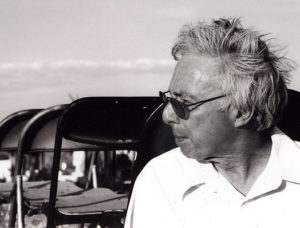 On August 21, 2016 the Ruth B. Shannon Center for the Performing Arts at Whittier College was the venue for a much-anticipated appearance by the distinguished composer Harold Budd. A fine Sunday crowd filled the auditorium, with many coming from a considerable distance to be part of this rare event. Mr. Budd was joined by Bradford Ellis and Veda Hille and the concert consisted of a single piece, Aurora Teardrops, that extended for 75 minutes. Prior to the beginning of the concert, a video of some California desert scenes by Jane Maru was projected on a large screen above the stage.
On August 21, 2016 the Ruth B. Shannon Center for the Performing Arts at Whittier College was the venue for a much-anticipated appearance by the distinguished composer Harold Budd. A fine Sunday crowd filled the auditorium, with many coming from a considerable distance to be part of this rare event. Mr. Budd was joined by Bradford Ellis and Veda Hille and the concert consisted of a single piece, Aurora Teardrops, that extended for 75 minutes. Prior to the beginning of the concert, a video of some California desert scenes by Jane Maru was projected on a large screen above the stage.